News
Exploring with the Dive Ninjas: Diving with the Mobula Rays of Baja California, Mexico
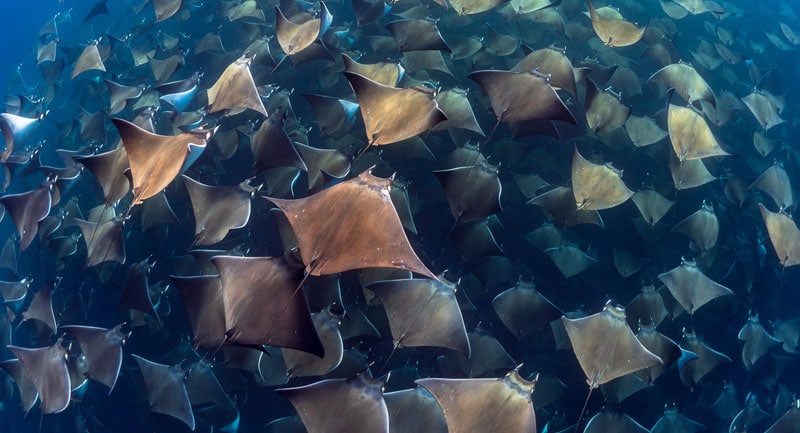
We are super excited to bring you the first in a new series of exclusive blogs for Scubaverse from Jay Clue, Founder of Dive Ninja Expeditions… Welcome Jay!
It’s dawn on the Sea of Cortez and the sun has just lifted above the horizon igniting the Baja sky and surrounding desert mountains with neon orange hues. As I scan the horizon, the silence on the water is almost deafening. Then it happens… A slap echoes across the sea. Then in quick succession another. And another. And another. It sounds like popcorn. Within seconds there are so many mobula rays leaping clean from the ocean’s surface that we struggle to even count them. We quickly grab our fins, masks and cameras, and get ready to jump in.
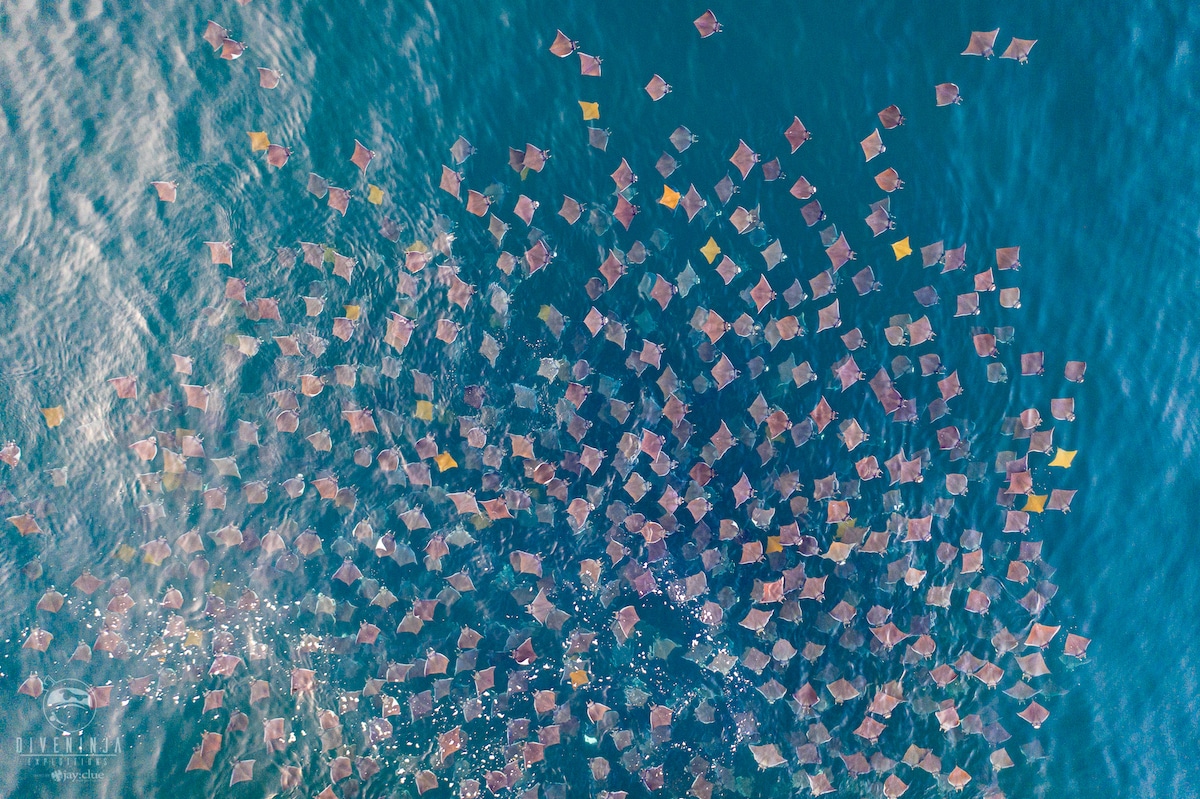
What comes next is something I struggle to put into words – no matter how many times I’ve seen it or try to speak about it. Imagine looking below the surface and your entire view is filled with a gigantic school of devil rays. Stretching from the ocean surface down to as far below as you can see. While white beams of light dance through the water the school swims in unison. It’s as if Mother Nature had choreographed thousands of beautiful underwater birds soaring together along a deep blue ocean backdrop. I’ve never seen anything else remotely close to it in the world. This is the annual mobula ray aggregation of Baja California Sur, Mexico.
The mobula rays of Baja California, or more specifically, Munk’s Devil Rays (Mobula munkiana, also known as Pygmy devil rays) live here year-round, but can also be found throughout the tropical eastern Pacific from Mexico to Peru. Usually they are found alone or in small groups. But every spring they begin to congregate in certain areas in southern Baja, creating what are considered to be the largest schools of any ray species on earth – and one of our planet’s most incredible natural spectacles. It is believed they gather here following the changing water temperatures to find mates and gorge on blooms of mysid shrimp and other zooplankton.
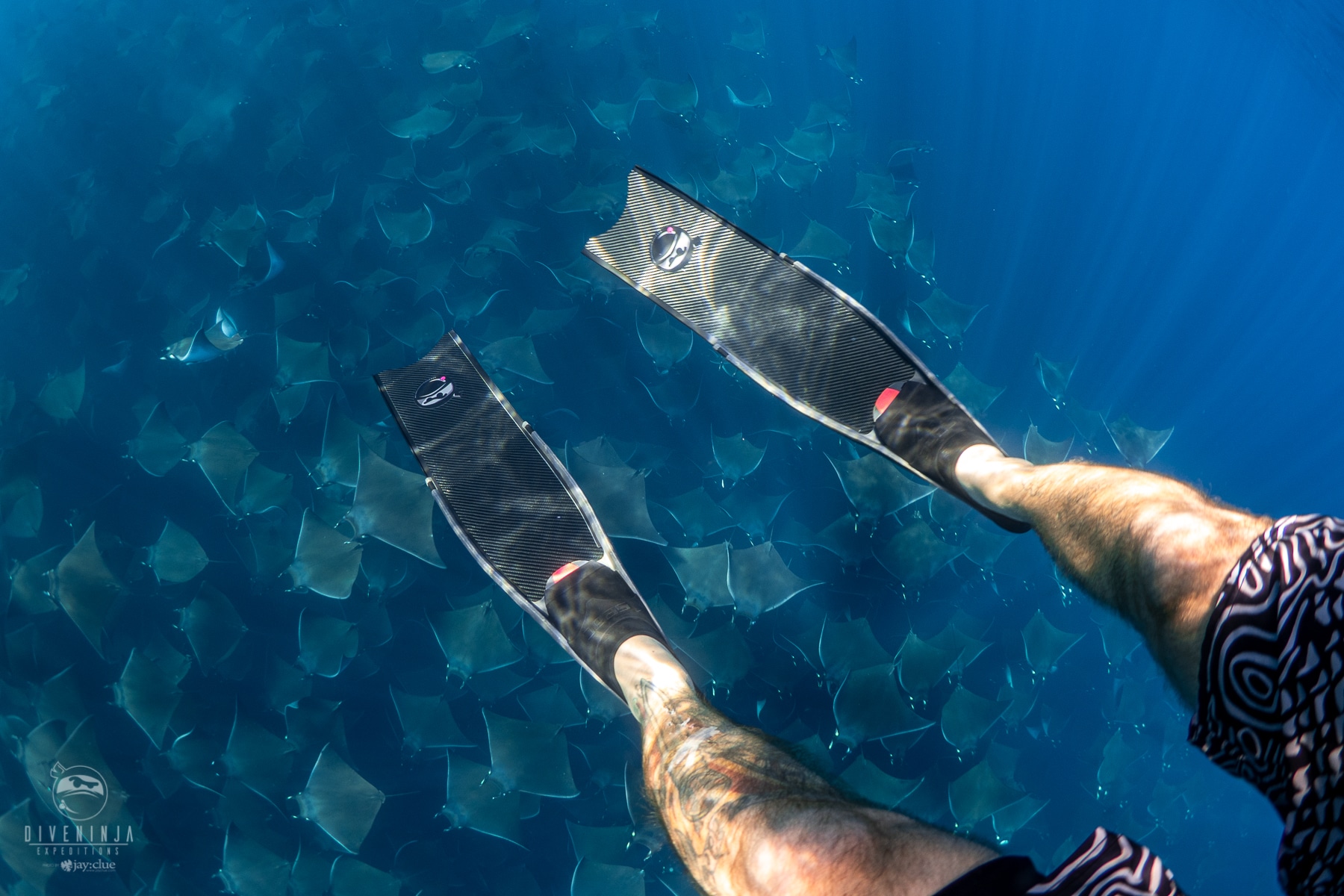
Although they create these gigantic schools every year not much is actually known about them. For example, we do not know how long they live for, or what their migration patterns are, or even why they love to jump from the water so much.

What we do know is that the IUCN has classified the Munk’s Devil Ray as Near Threatened since 2006. They also have one of the lowest fecundity rates (chance of reproducing) of any marine species due to them being estimated to only give birth to 1 pup every 2-3 years. This tied with them frequently being caught as bycatch in commercial fishing, gillnets, and by trawlers means their populations could easily take a sudden turn for the worse and diminish quite quickly. Scientists like Marta are working hard to better understand them so that more protections can be put in place to help preserve these elegant creatures and the natural wonder they create.
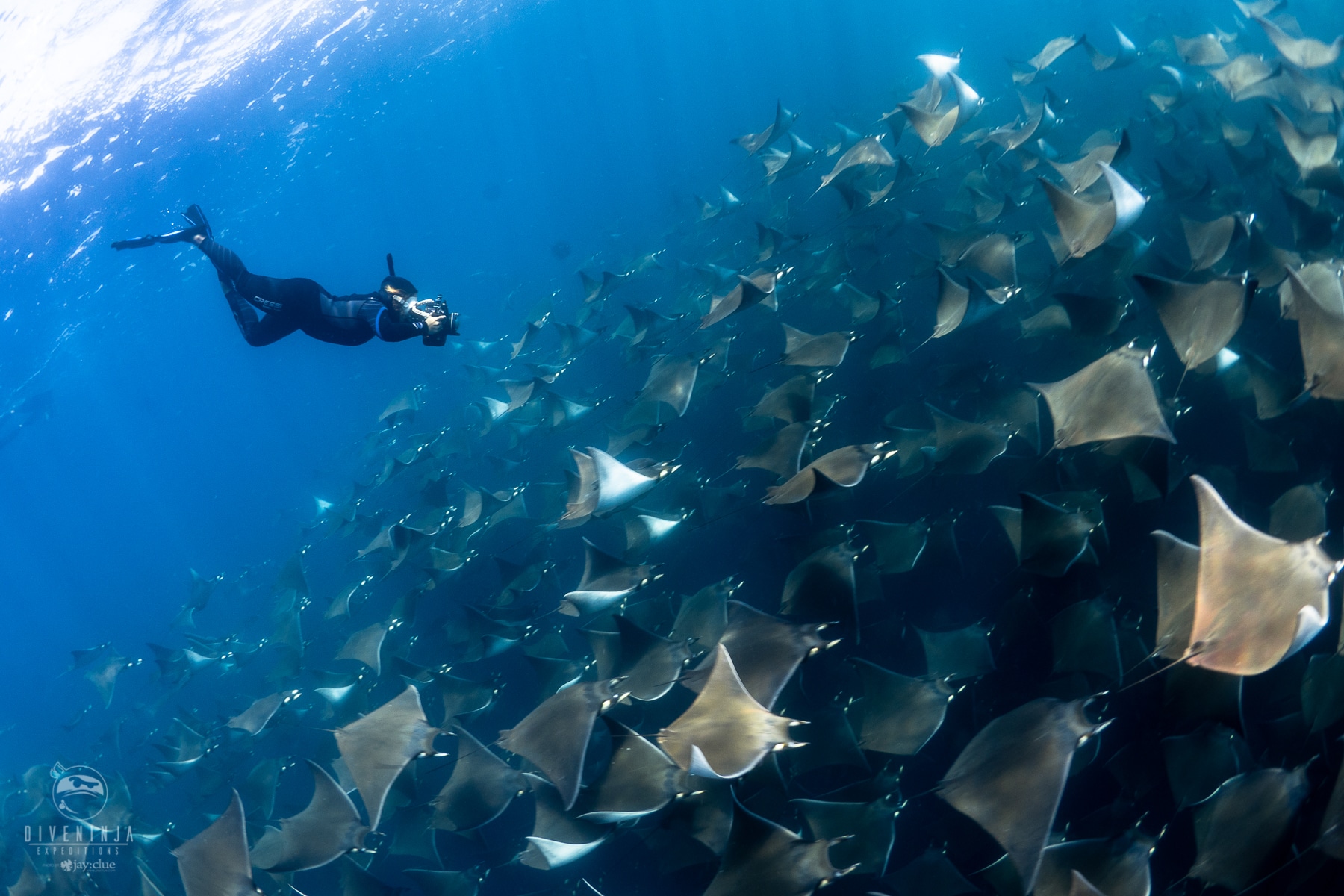
They are the smallest ray in the mobula family measuring about 1.1 meters from wing tip to wing tip – making them a fraction of the size of their huge cousins – the Oceanic Manta Ray. But what these little ninjas lack in physical size they make up for in acrobatic stunts. They are often seen flying from the water performing incredible flips and vertical jumps to heights of almost 3 meters above the surface – making for awesome encounters both above and under the water. Seeing the schools they create is an experience you will never forget. Diving alongside a school towering 20 meters tall and what seems like endless in length is jaw dropping. It is a stunning reminder of how remarkable our oceans truly are.
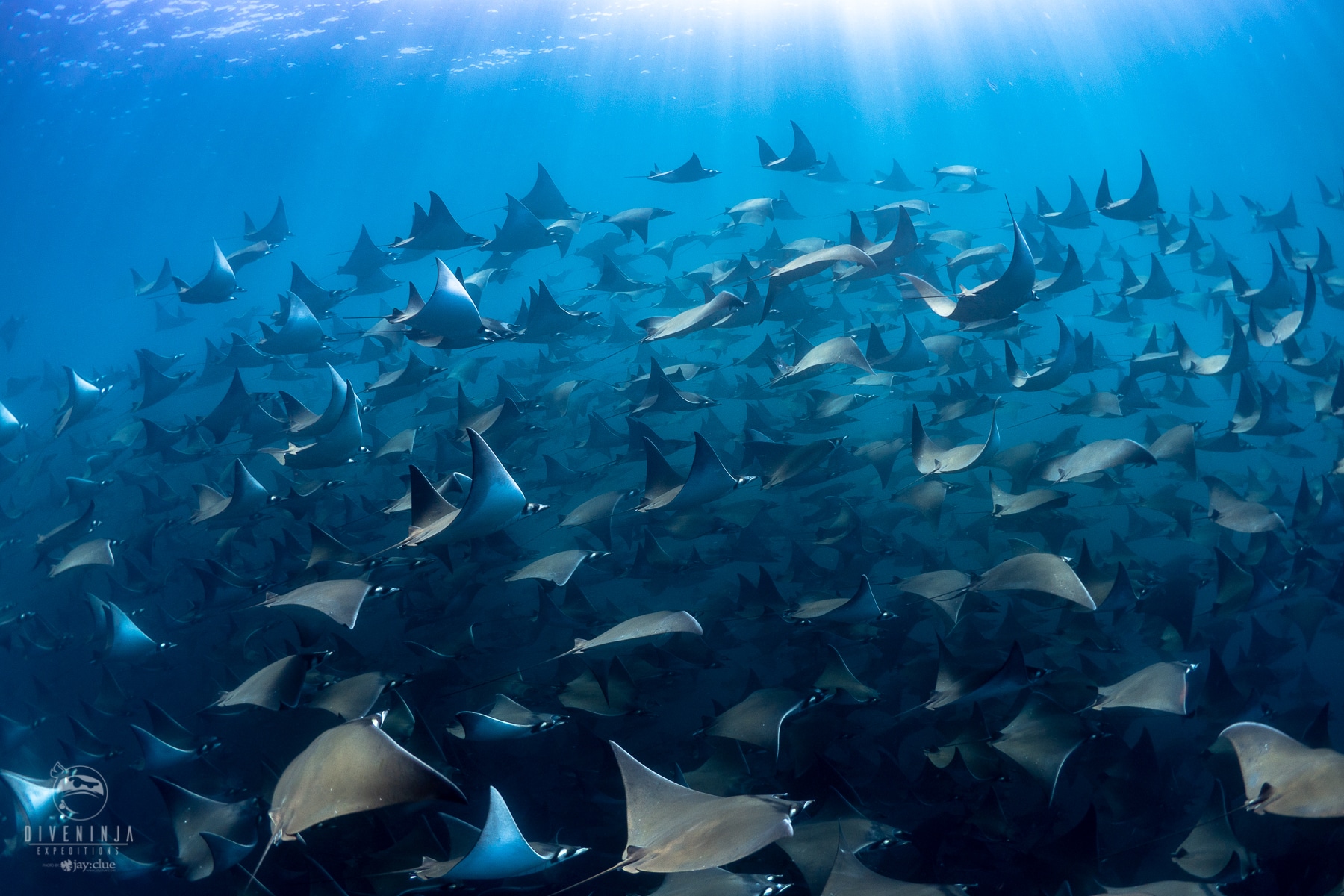
How to Experience it
The best time of year to see them is from late April until around mid July. Water temperatures this time of year can be a bit chilly around Baja, so you’ll def want to pack a wetsuit. But since all the action is within the first few meters of water, and the rays tend to stay away from bubbles, you can leave all the scuba gear at home and just pack your fins, mask, snorkel, and wetsuit. Flights are pretty straight forward with direct flights from many US cities, as well as Mexico City, into the Los Cabos International Airport (SJD).
There a few tour operators offering short half day tours to see them in La Paz and Cabo San Lucas. But for the best way to experience the magic of this event I would recommend planning for a few days with them because the action changes every day. Dive Ninja Expeditions runs specialized 5 and 8 day ‘Mobula Ray Expeditions’ to their ‘secret spots’ far away from the big cities and hoards of tourists. The expeditions are well thought out and include pretty much everything — oceanfront accommodation in a beautiful little beach town, round trip transfers from Cabo, educational talks & presentations, specialized Team Ninja guides, meals, and a lot more.
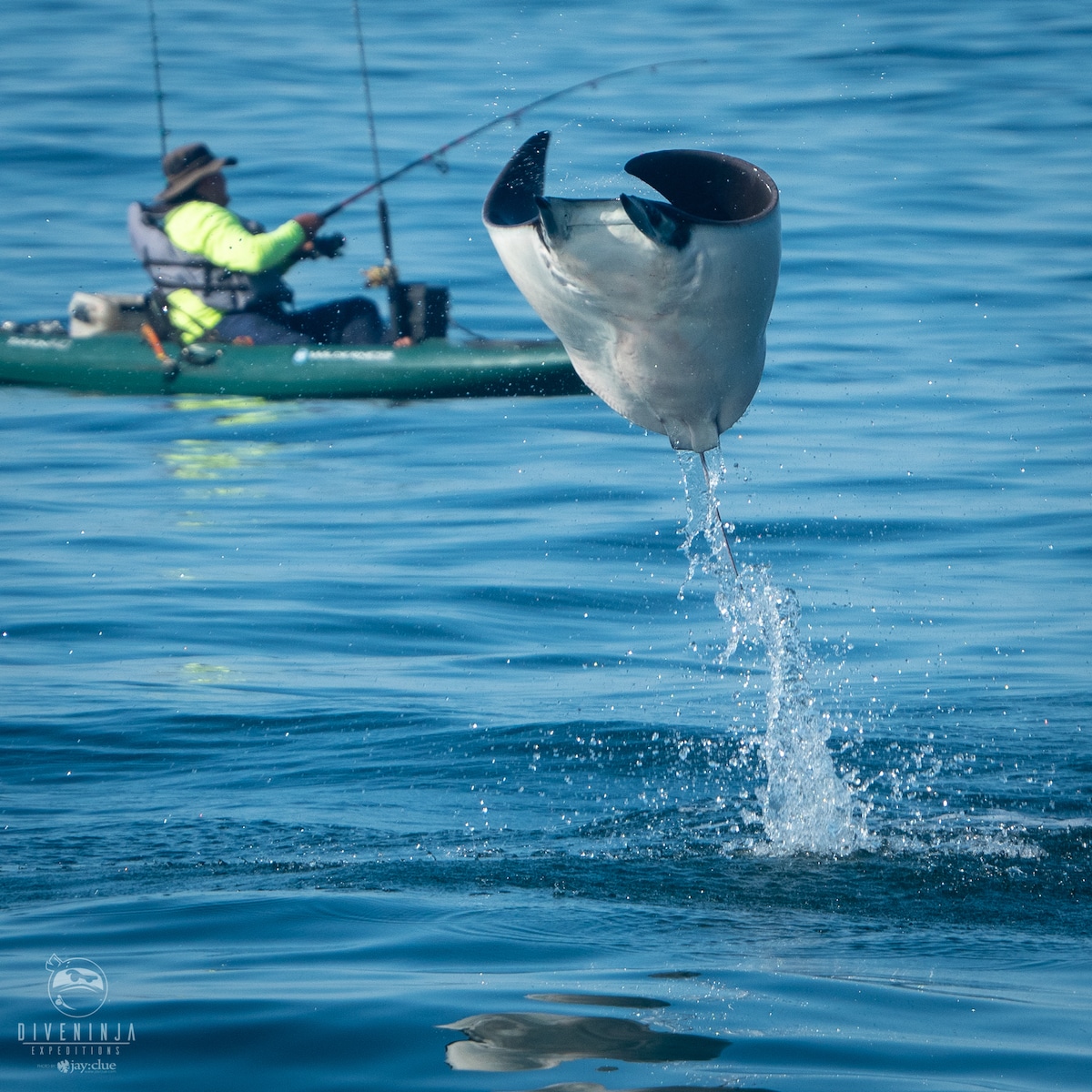
Additionally they offer citizen science style trips where the guests get to learn more about the rays and can take part in critical mobula ray research activities alongside marine scientist & mobula ray expert, Marta Palacios. Plus in proper eco-ninja fashion, a portion of your ticket purchase is donated by Dive Ninjas to help fund Marta’s research and local conservation efforts to protect these incredible creatures.
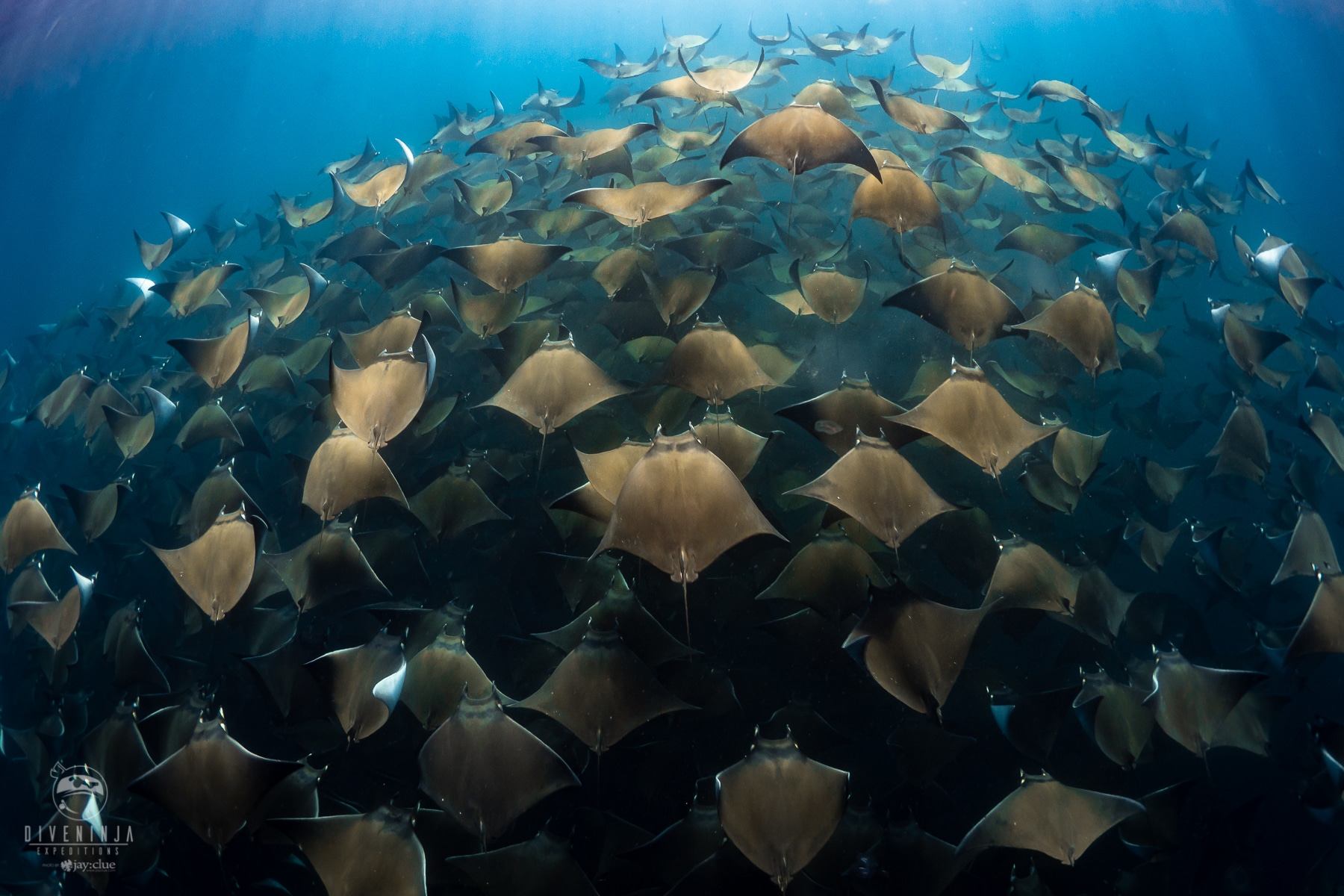
Interested in checking out this extraordinary adventure yourself? Visit the Dive Ninja Expeditions website, they’ve just released their 2020 Mobula Ray Expedition dates!
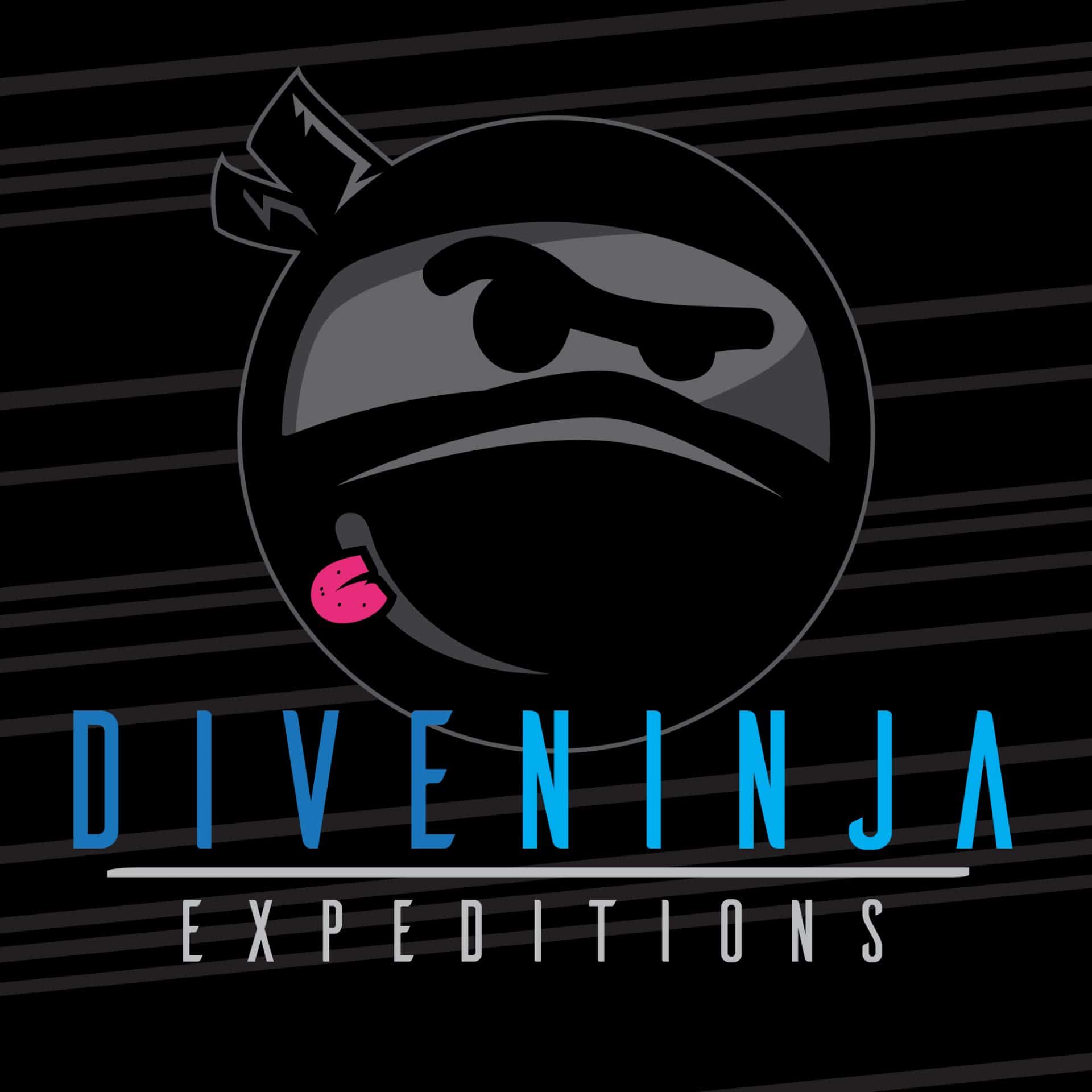 For more from Jay Clue and Dive Ninja Expeditions, follow:
For more from Jay Clue and Dive Ninja Expeditions, follow:
Instagram: instagram.com/JayClue
Facebook: facebook.com/iamjayclue
Website: www.DiveNinjaExpeditions.com
News
Book Review: Fire on Monroe Bravo by Fred Lockwood

Fire on Monroe Bravo is the latest book in the Jack Collier series by Fred Lockwood. Our story begins with our lead characters, Jack and Sandro, owners of Marine Salvage & Investigation Company, arriving on the Monroe Bravo Oil & Gas Platform in the North Sea. Having secured a contract for their vessel the MV Stavanger to act as support ship to the platform for TransGlobal Oil, our protagonists are on a celebratory visit.
However almost as soon as they arrive a series of explosions rock the platform, causing huge damage, loss of life and the very real danger of a massive human, ecological and financial disaster.

As the danger mounts for both our heroes and the surviving workers, Jack and Sandro will have to escape the inferno, all while trying to save the platform and the men still trapped unable to help themselves.
The disaster sets the scene for the unfolding story lines following the fate of the platform and our main characters, the police investigation into a suspected terrorist act and the actions of TransGlobal Oil as they attempt to navigate the pubic outcry and financial repercussions.
In his eighth book, Fire on Monroe Bravo, Fred Lockwood delivers an explosive thriller, with plenty of above and in-water drama, and our heroes fighting for survival, what more can you ask for?
We thoroughly recommend this read and look forward to the next in the series. For more information about his book series, you can check out the reviews of his previous books here on Scubaverse.
- Title: Fire On Monroe Bravo
- Author: Fred Lockwood
- ISBN: 979-8325324536
Available in a paperback version and for Kindle from Amazon and book stores.
Blogs
Alonissos: The complete diving destination (Part 1)

In June we were incredibly fortunate to be invited to dive in Alonissos, a small Greek Island in the Sporades island chain located in the North Aegean Sea. While I have long been a big fan of the Greek Islands as a great holiday destination, I had not had the opportunity to do any diving on previous visits and Mike and I were extremely excited to see what Alonissos had to offer both above and below the surface!

The Sporades are easily accessible via the airport in Skiathos (the first island in the chain), which is served by Jet2 flights from all major UK airports from May through October. Numerous ferries and charter boats make island hopping from Skiathos Town a breeze. After an hour boat ride, the picturesque port of Patitiri was a wonderful introduction to Alonissos, where we were met by our gracious hosts Kostas of Albedo Travel and Dias of Alonissos Triton Dive Center. Mike and I were delighted to be staying at the Paradise Hotel, aptly named for its stunning views over the sea and great location for walking to the waterfront.

Alonissos is beautifully situated in the National Marine Park of Alonissos and the Northern Sporades, the largest marine protected area in Europe. The surrounding seas offer fabulous marine life, including incredibly rare species such as the Mediterranean monk seal. They boast deep walls covered in gorgonians and sponges, stunning topography with caverns, swimthroughs and pinnacles, and the first accessible ancient shipwreck from 500BC!

In locations where historical sites have been reported, the waters are largely restricted, but with collaboration between government, underwater archeologists and dive centres, incredible underwater museums are being created for a truly unique diving experience. Alonissos is home to the first of these, the Ancient Shipwreck of Peristera Accessible Underwater Archeological Site. The chance to dive into history (along with reports of healthy reef life and amazing underwater topography) meant Mike and I were keen to get in the water.

Our introduction to the diving around Alonissos was at the Agios Georgios Pinnacles, in the channel between Alonissos and Skopelos. This fantastic site was named “The Chimney,’ and proved to have a huge amount to see. We got to a decent depth here (over 25m), and marvelled at a colourful reef wall with a wonderful swim through whose rocky walls were absolutely covered with life. As well as brilliant topography there was no shortage of macro life here. We saw numerous nudibranchs, five different species in total. The second dive at Mourtias reef nearby was a shallower dive along a nice wall with lots of crevices. Several moray eels and grouper called this site home. We enjoyed looking in the crevices for lobster and smaller benthic life, such as cup corals and tunicates.

Our itinerary allowed us two dives a day with afternoons left to explore the island with our hire car and evenings to enjoy the famous Greek hospitality. This proved to be a lovely mix of in-water and land based diversions.

The next days diving to the Gorgonian Gardens and Triton’s Cave was to be even better! These two stunning sites are nothing short of fabulous. The Gorgonian Gardens was a deep wall near to the Agios Georgios islands. The ever-present currents in this deep channel meant that the sea life was amazing … the namesake Gorgonian sea fans dotted the wall at a depth of 30 to 50 meters, getting ever larger the deeper we went. Above 30m was by no means less beautiful, with sponges, corals, scorpionfish, moray eels and some rare and colourful nudibranchs.

The second shallower dive of the day was to Triton’s Cave or the Cavern of Skopelos, on the east side of that island. The spectacular rock formations had wild striations both above and below the water making a truly epic topography. The cavern entrance was at 14m, and big enough for a buddy pair, winding up to 6m and passing two beautiful windows out into the blue. Emerging from the cavern, the light at the shallower depths and the incredible rock formations made for a fantastic gentle swimming safety stop and we all surfaced by the boat with massive grins.

Check out our next blog :Alonissos: The complete diving destination (Part 2)” to hear about our amazing dive on the 2500 year old Peristera Wreck!
Thanks to:
Alonissos Triton Dive Center https://bestdivingingreece.com/
Albedo Travel https://alonissosholidays.com/activities/
Paradise Hotel https://paradise-hotel.gr/
Alonissos Municipality https://alonissos.gr/en/
-

 Blogs2 months ago
Blogs2 months agoDiving With… Nico, Ocean Earth Travels, Indonesia
-

 News1 month ago
News1 month agoMurex Bangka Announce New Oceanfront Cottages & Beachfront Dining
-

 Blogs2 months ago
Blogs2 months agoA new idea in freediving from RAID
-

 Marine Life & Conservation1 month ago
Marine Life & Conservation1 month agoIceland issue millionaire whale hunter a licence to murder 128 vulnerable fin whales
-

 Marine Life & Conservation2 months ago
Marine Life & Conservation2 months agoThe Shark Trust Great Shark Snapshot is back
-

 News3 months ago
News3 months agoCharting New Waters; NovoScuba Goes Global with the Launch of their Revolutionary Dive Training Agency!
-

 Gear News1 month ago
Gear News1 month agoNew Suunto Ocean – a dive computer and GPS sports watch in one for adventures below and above the surface
-

 Marine Life & Conservation Blogs2 months ago
Marine Life & Conservation Blogs2 months agoBook Review: Plankton















